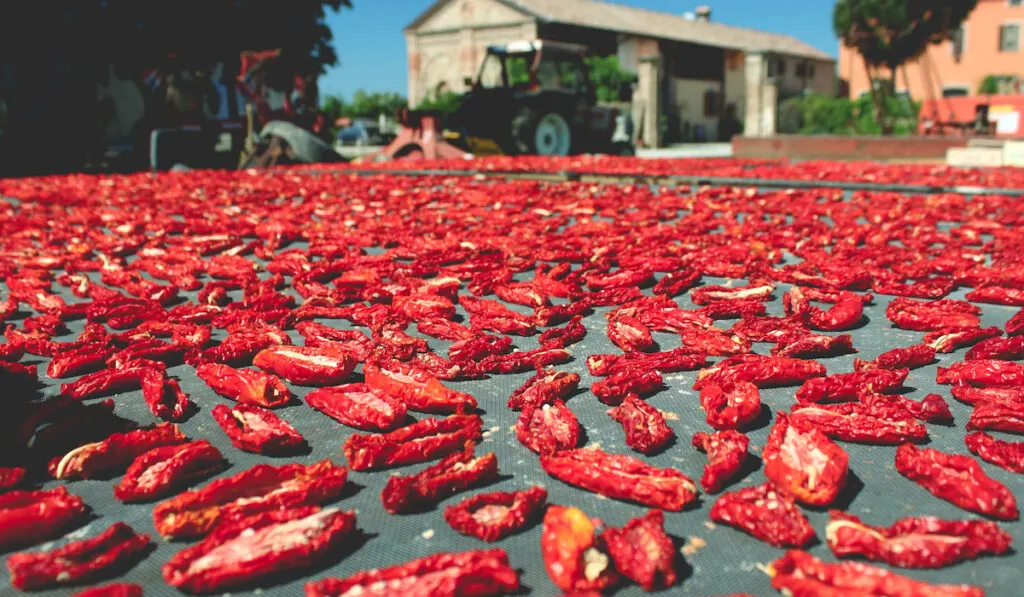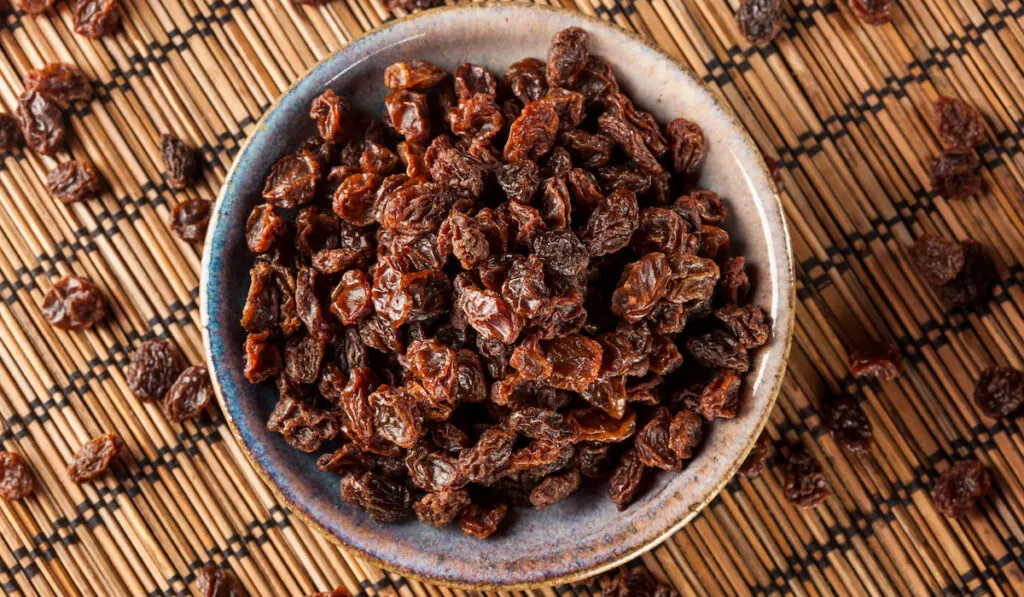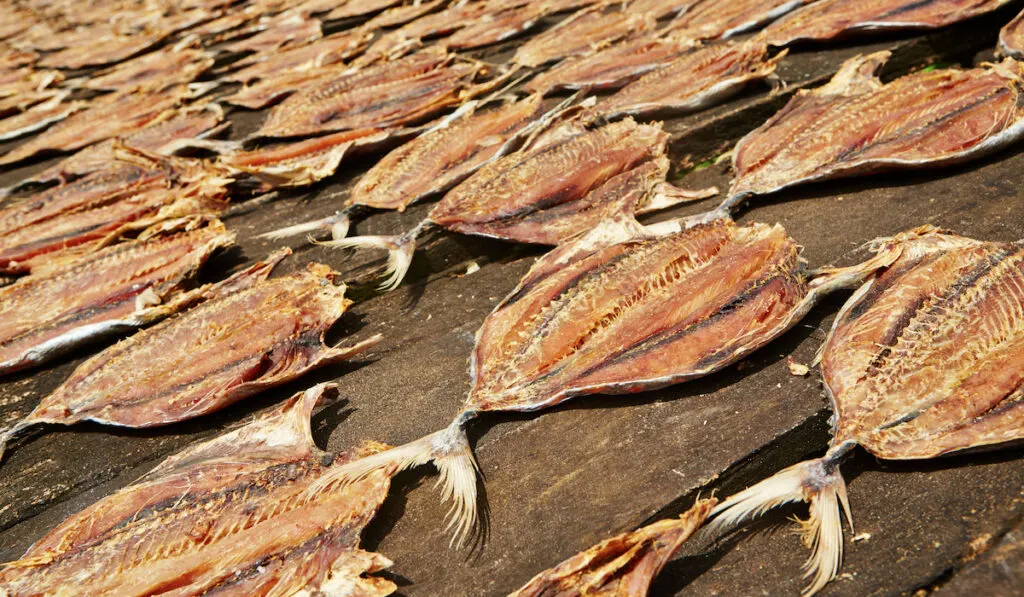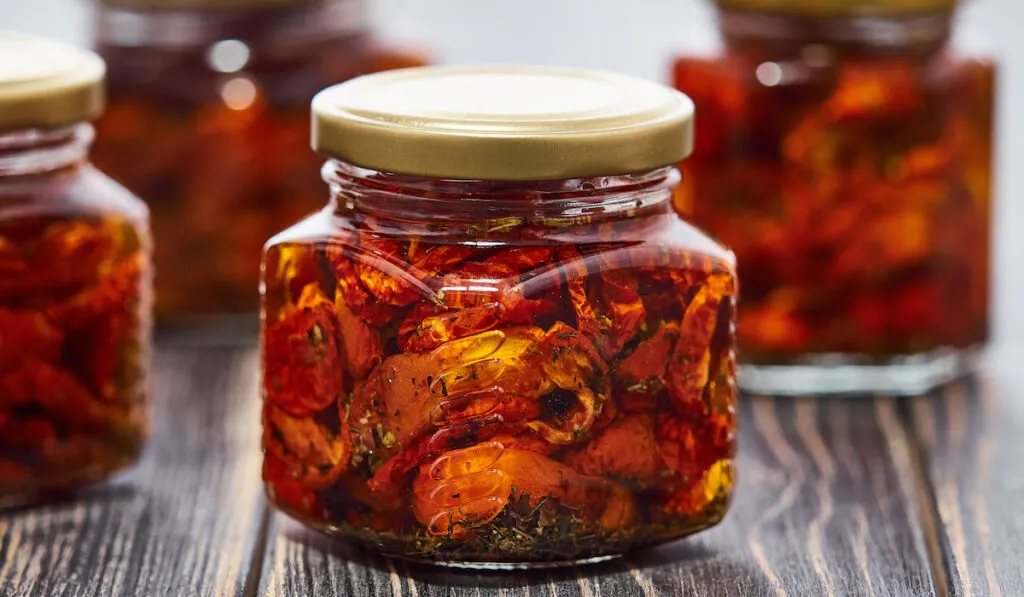Drying your food before storing it is one of the best ways to keep it edible for a long time. There are many ways to dry food, with sun drying being the oldest method, developed by our ancestors thousands of years ago.
To start sun drying, you’re going to need temperatures higher than 85°F, and humidity lower than 60% (ideally, much lower than that). Then, all you have to do is lay the food down on a flat surface and let it dry in the heat.
However, sun drying isn’t as simple as it sounds. There are some foods that you can dry in the sun, but you shouldn’t (lest you want food poisoning), and there’s also the issue of sun drying being so ineffective that it may be better to simply buy a food dehydrator.
Learn everything you need to know about sun drying in the article below!

Table of Contents
What Is Sun Drying Food?
Sun drying is one of the many methods of food dehydration. Dehydrating food before storing it is one of the most effective ways to preserve it for the long-term.
While using food dehydrators is the most effective way of drying foods, you can also do it in the sun very easily.
There are two basic methods of sun drying, which we’ll get to in a minute, but they’re both based on the same premise – using the heat generated by sunlight to dry the food.
By getting rid of all the moisture, your food will last longer.

3 Foods That Can Be Sun Dried
Not all foods can be dried in the sun – fruits (especially berries) dry very well, but you can also dry vegetables, as well as beef jerky.
Fruit doesn’t take more than a few days to dry properly. The chances of rotting are the lowest with fruit out of all food groups because of their high sugar and acid content.
Raisins are the most common type of sun-dried food.
Unfortunately, you won’t be able to dry seeds in the sun because seeds need temperatures upwards of 100 degrees Fahrenheit in a closed environment for a few hours to dry.
Vegetables and meat (for jerky) can dry, but you really shouldn’t sun dry them unless it’s absolutely necessary. They lack the sugar and acid found in fruit, so the risk of spoilage is much higher.
We can’t forget to account for the protein in meat, which makes it even more prone to the growth of microbes.
If you have an oven, we’d recommend using that to dry jerky and vegetables, as they’ll most likely rot in a sun dehydrator.
Even more importantly, the National Center for Home Food Preservation recommends this course of action too.
How Do You Sun Dry Food? (Two Methods)
Sun drying food is a method that depends solely on the weather conditions and it’s completely ineffective if it’s not hot and dry outside.
This is why it’s the most primitive method of food drying, as a dehydrator can dry food regardless of the weather.
The temperature should be at least 85°F, and even higher, if possible, while the humidity absolutely must be below 60%, ideally below 20%. The latter is a common problem, which is why sun drying is often ineffective.
Before we get started, it’s important to point out that both sun drying methods are slow in comparison to modern food drying methods.
Also, if you live in a place with relatively cool summers, you won’t be able to dry food with these methods.
As we said before, there are two methods of sun drying. We have traditional sun drying and solar drying.
Traditional Sun Drying

Traditional sun drying is very simple – our ancestors developed this method thousands of years ago.
To sun dry food through the traditional means, simply place the food (berries, for example) on a flat surface out in the sun and leave it there until it is completely dry.
To make the process even more efficient, you can put a screen on two blocks, thus allowing air circulation, which will dry your food faster.
Take it a step further, put aluminum foil under the screen, which will reflect the sun from the ground towards the fruit.
While this method is slow, we can’t argue with its effectiveness. However, drying your food in a dehydrator is much, much quicker, not to mention that it’s safer.
Since this method leaves your food out in the open, it can be compromised by insects and the cleanliness of the drying surface. Additionally, if the weather takes a turn for the worse, you’ll be stuck with half-dry food.
Feel free to try this method out if you’re wondering how cavemen dried food, but if you’re serious about drying food, know that this is the least effective method of doing it!
Solar Drying

Solar drying also uses nothing but sunlight to dry the food, but it’s incomparably more effective than sun drying because the drying process occurs within a closed system.
You can build the closed solar drying system yourself – it should be chair-shaped, with the front and the back covered with transparent foil, while the sides should stay open for air circulation.
Put the food inside and leave the solar dryer in the sun. The sunlight will warm the dryer up, but heat won’t be able to escape easily because of the foil. This makes your solar dryer a very small greenhouse, basically.
Food will dry much quicker in a solar dryer because of the intense heat – something you simply can’t achieve with traditional sun drying.

How to Tell If Sun Dried Food is Safe to Eat?
You have to test your food for dryness before you eat it. Some foods can dry in a few days, while others may take a week or even longer. Jerky, for example, is much more difficult to dry than fruit.
Dry fruit, for example, should be leathery. The top layer of the fruit, which every fruit has, reacts to high temperatures by becoming leather-like. If it’s really dry, most fruits will be soft, and it should be easy to squeeze.
Pick a few pieces of fruit and squeeze them – there should be no moisture on your hands. If that’s true, then your fruit is truly dry.
Vegetables are the opposite – they become crispy when they dry, and they should easily break apart (like a dry twig).
Jerky is similar to vegetables when it dries – it’s very stiff and doesn’t bend easily, but it’s chewy.
Although, we once again reiterate that you shouldn’t dry jerky in a sun dryer because of the health risks this method poses. Dry your jerky in an oven.
How Long Do Sun Dried Foods Last?
The exact answer depends on the food. Properly dried, packaged, and stored (preferably in the freezer) fruits can last up to 12 months. Vegetables usually can’t last longer than six months. Jerky can last up to a year if you store it properly.

How to Store Sun Dried Foods
You shouldn’t store the food before it’s cooled down completely. The best way to pack it is by using moisture-resistant containers. It’d be even better if you could vacuum-seal the food.
There are a few alternatives which aren’t as good as airproof packaging, but they’re still good enough at keeping your food safe; glass mason jars, metal cans (which can be sealed), and plastic freezer bags.
Keep in mind that fruit needs to be pretreated and post-treated when it’s dried (which is a very complex topic that deserves its own article, so we won’t be going in-depth about it here). Treated fruit can’t be stored in metal cans!
Ideally, you should keep your sun-dried food in the freezer – that’s the best way to keep it edible for a long time.
However, you can keep your food in the fridge too, although it won’t last as long.
The last option is simply keeping it in a cool, dark place. The temperature should be about 60°F.
Fruit can stay edible for about a year at that temperature, while you’re cutting its time in half if you store it at 80°F.
Of course, if you don’t pack your sun-dried foods properly, they’ll go bad very quickly, no matter where you store them.

A Summary – Sun Drying Works, But It’s Obsolete
Sun drying is an effective method of drying food, there’s no doubt about it. The problem is, all other food drying methods we have nowadays are much better, safer, and faster at drying out food.
To sun dry, all you need to do is put the food on a clean surface and leave it out in high-temperature, low-humidity weather for a few days. You can also go a step further and build a solar dryer.
However, we once again advise you to look into food dehydrators as they’re simply better at the job.
